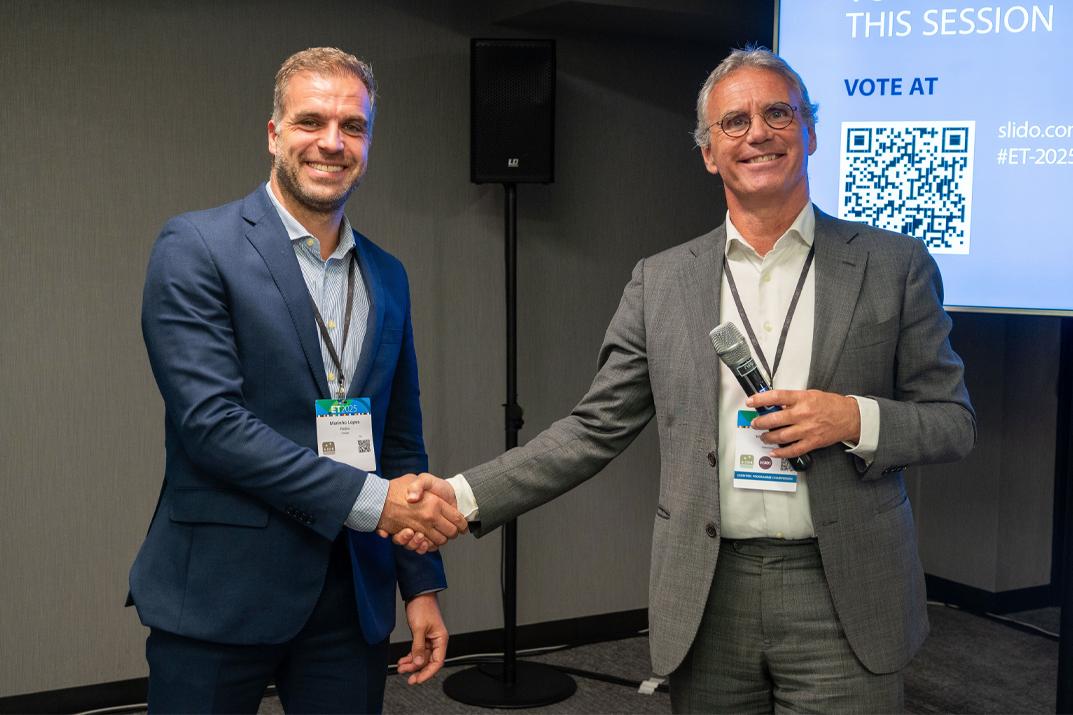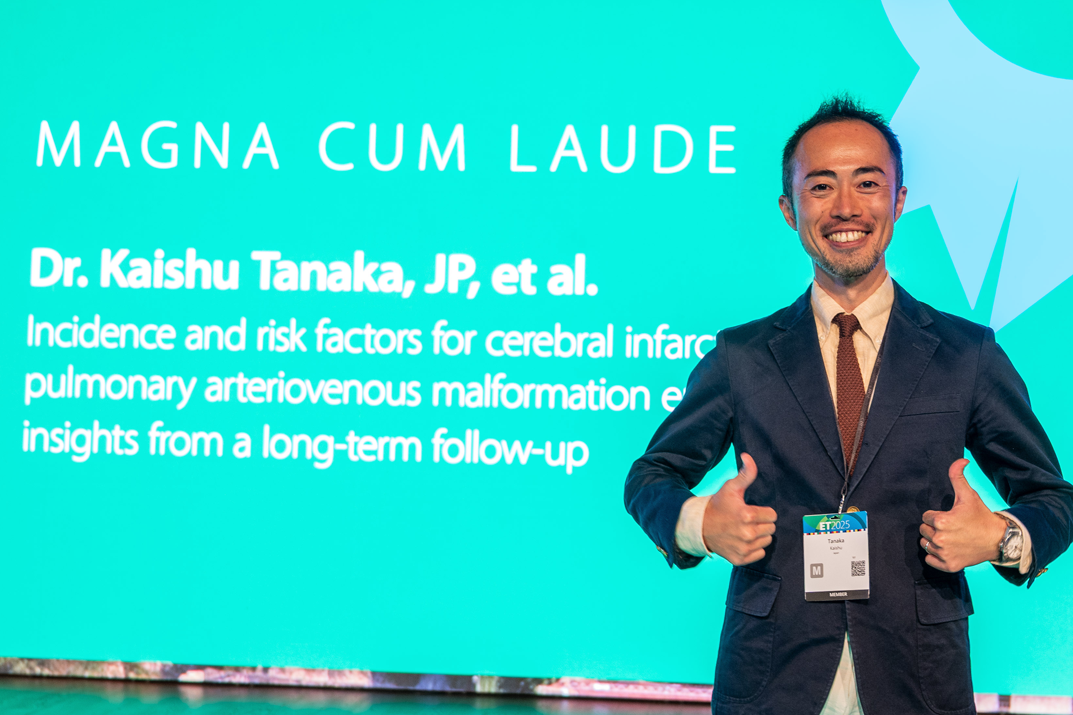CIRSE Insider: Why did you choose the topic of cerebral infarction after pulmonary arteriovenous malformation embolization as a research topic? Was it something you had come across in your practice?
Tanaka: Yes, this research was directly inspired by clinical observations in my outpatient practice. Between 2019 and 2020, I encountered three male patients with hereditary hemorrhagic telangiectasia (HHT) who had undergone PAVM embolization between 3.8 and 16 years earlier. Unexpectedly, all three developed symptomatic cerebral infarctions during follow-up. Fortunately, these events did not result in any major disability or impair their daily activities, but they were nonetheless alarming. Until then, I had believed that cerebral infarction after embolization was extremely rare, so these cases came as a surprise.
This experience raised concerns that there might be additional asymptomatic infarctions going undetected. I was therefore motivated to perform MRI evaluations whenever possible to determine the true frequency of cerebral infarction after embolization and to identify potential risk factors. My goal was to improve long-term patient care by gaining a deeper understanding of these delayed complications.
CIRSE Insider: What have been your main findings?
Tanaka: We found that 17% of patients developed cerebral infarction after PAVM embolization, which is a higher incidence than previously reported. Notably, half of these infarctions were asymptomatic and only detectable on MRI. Our analysis identified male sex, younger age at the time of embolization, and complex PAVMs as significant risk factors. Interestingly, residual or recurrent PAVMs were not strongly associated with infarction risk; however, this may have been influenced by the limited number of cases in our cohort.
CIRSE Insider: Why did you choose ET to present your research?
Tanaka: ET is one of the most prestigious forums in the field of embolotherapy, bringing together leading interventional radiologists and researchers from around the world. It provides a highly specialized audience with a deep interest in embolization science and outcomes. Presenting our work at ET gave us an ideal platform to reach clinicians who are directly involved in PAVM treatment. In addition, the venue of ET is always thoughtfully chosen and attractive, which creates an inspiring atmosphere for academic exchange and networking.
CIRSE Insider: What did you think made your work stand out?
Tanaka: I believe the long-term follow-up, the use of MRI for detecting both symptomatic and silent cerebral infarctions, and the focus on risk stratification contributed to the impact of our study.
CIRSE Insider: What impact do hope your results will have on patient care?
Tanaka: I hope this study will raise awareness of the need for long-term neurological observation in selected high-risk patients and serve as a foundation for future large-scale studies using MRI to determine the true incidence and risk factors of cerebral infarction following PAVM embolization.
CIRSE Insider: Are you working on any other embolotherapy-related research?
Tanaka: Yes, we have recently begun exploring the use of shape memory polymer, a novel self-expanding and radiolucent embolic material, in various types of venous embolization. Based on promising initial clinical results, we are planning a basic research study to further evaluate its embolic properties and behavior in controlled settings.
CIRSE Insider: Will we hear again from you at ET 2026?
Tanaka: I certainly hope so. We are currently planning to present the results of our basic research on shape memory polymer. I would be honored to share these developments at ET 2026. Additionally, based on the findings from our current PAVM study, I hope to initiate a multicenter study in the future to more accurately evaluate the incidence and risk factors for cerebral infarction using MRI.


